Global Switch London North
2 Aug 2018Global Switch London North is currently going a transformation.
London Festival of Architecture
1 Jun 2018One of our buildings featured at world’s largest annual architecture festival.
Social Media
studioNWA is committed to a carbon management plan to reduce operational carbon emissions, in line with the UK and global Net Zero target by 2050 to limit the effects of climate change.
The framework:
- We identify operational carbon emissions categories based on the Greenhouse Gas (GHG) Protocol Corporate Standard for accounting and reporting scopes 1, 2 and 3 emissions.
- We quantify and record emissions in the studioNWA database supported by UK Government GHG Conversion Factors for Company Reporting data.
- We monitor emissions on a yearly basis and benchmark against 2019, our baseline year.
- We set goals and implement actions to reduce scope 1, 2 and 3 emissions in percentage increments each year.
- We inform staff and stakeholders on a summary of actions and progress in a Sustainability Report presented at the end of Q4 each year.
Scopes 1,2 & 3
36.7 Tonnes CO2e
Embodied carbon represents the accumulative emissions a particular material or product generates throughout its lifetime, from manufacturing stage to installation during construction, maintenance and disposal at its end of life.
Classified as critical infrastructure buildings, data centres are required to meet high levels of security, performance and insurance conditions, thus having to rely on traditional high performing, durable materials such as concrete, steel and aluminium – amongst the highest in embodied carbon content.
As material specifiers, we engage with stakeholders in the supply chain to stay up to date with advances to manufacturing processes of traditional materials and to encourage a growing portfolio of lower carbon alternatives. We analyse embodied carbon data from EPD certificates and prioritise reduced upfront carbon (A1-A5) and circularity whenever possible.
studioNWA has also developed ECMat, its own carbon management tool to produce project case studies and to benchmark embodied carbon of materials as we continue to improve our carbon-conscious spec.
Measure. Monitor progress. Push for change. That’s studioNWA‘s approach to advancing Net Zero.
Life Cycle Assessment Stages: BS EN 15978:2011
Urban greening has become more prevalent as a planning requirement in urban settings, where contributions can be made in the form of green roofs, green walls and amenity areas.
studioNWA engages with Local Planning authorities and specialists to identify the best solution for a given project site to mitigate heat island effect, air pollution, rainwater storm management and
contribute to on-site carbon capture, whilst meeting relevant policy targets.
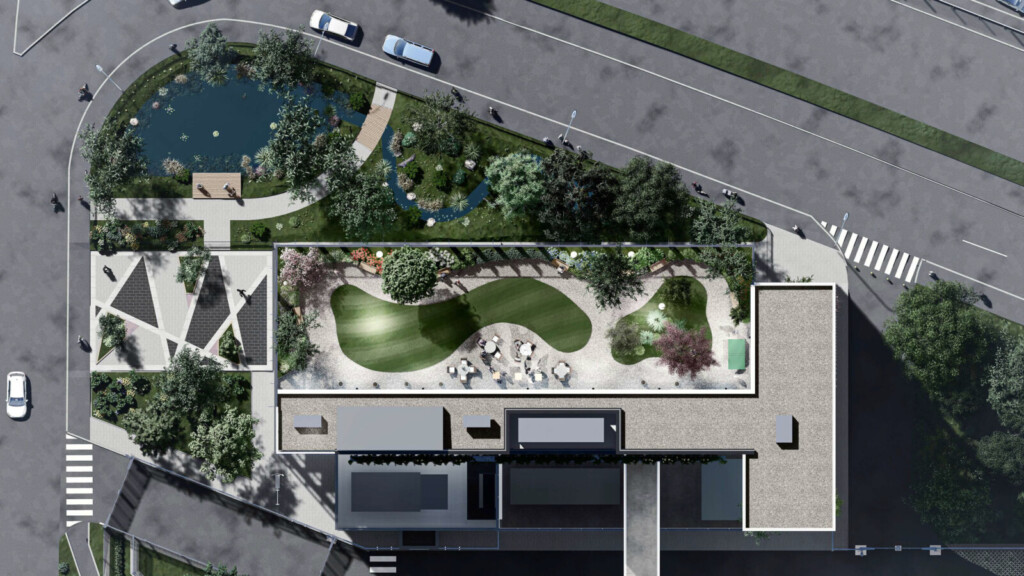
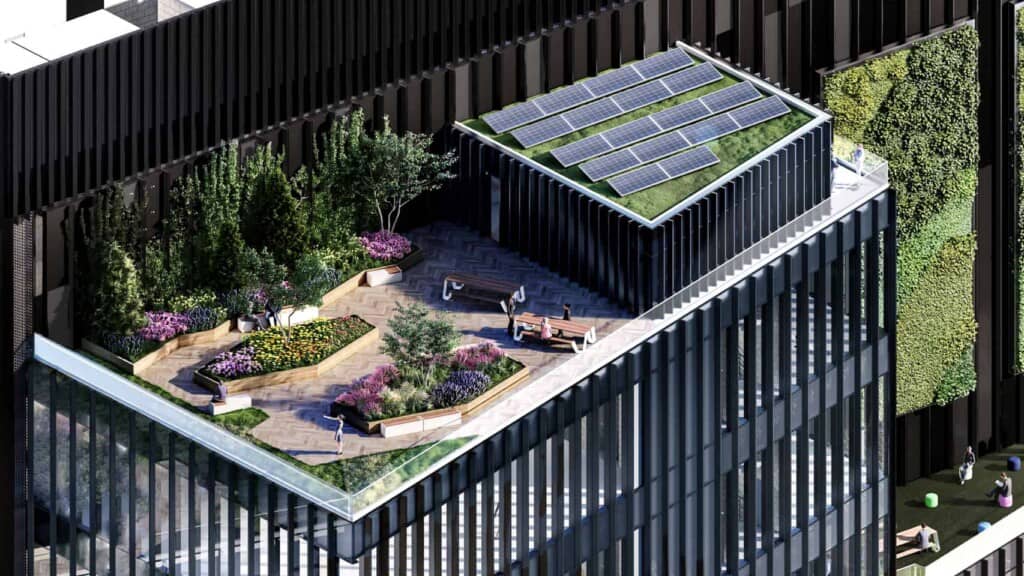
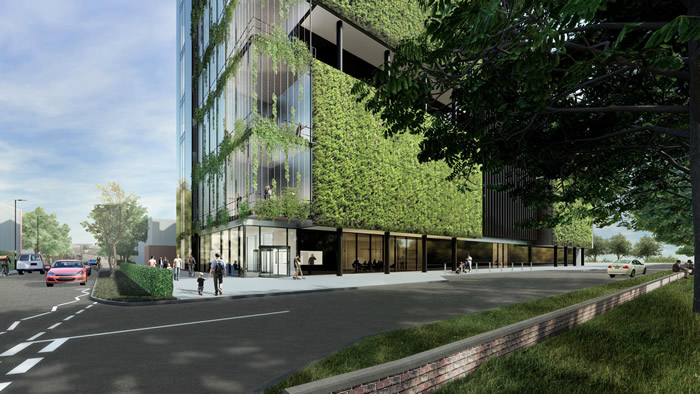
BREEAM & LEED assessments are the leading and most widely adopted environmental assessment methods for data centre buildings today, often pursued at planning stage and to reinforce client’s ESG goals.
studioNWA’s in-house knowledge of these certification schemes allows us to work closely with our clients, sustainability consultants and wider design team to maximise the potential for architecturally-driven credits and meet project targets.
Water
- Selection of plumbing fixtures that reduce water consumption.
- Rainwater harvesting space allocation.
Materials
- Use of materials with high Green Guide Ratings to ensure lower environmental impact.
- Responsible sourcing of wood with sustainability accreditations
Waste
- Adequate provision of recyclable waste storage facilities to ensure waste generated during building operation is diverted from landfill.
Pollution
- Screened mechanical plant areas for noise attenuation.
Land use and energy
Implementation of green roof and walls for a number of benefits:
- Contribution to greening factor, stormwater attenuation, filtration of air pollutants and carbon sequestration, reduction of heat island effect and thermal losses.
Transport
- Provision of bicycle shelters and changing facilities to encourage building users to cycle to site, thus reducing carbon emissions from transport.
- Charging stations for electrical vehicles.
Health and Wellbeing
- Design to provide building occupants with adequate levels of natural daylighting, views out and glare control.
- Indoor air quality to be protected from external sources of pollution such as exhausts and cigarette smoke.
- Selection of interior finishes with regulated off-gassing emissions.
“Fabric first” approach optimises thermal performance of the building envelope to reduce energy use demands from the outset of the design process.
In data centre typologies, this methodology is particularly effective for the design of administration blocks, as daylighting and views out are an inherent requirement for office areas with permanent workstations, meeting rooms and amenity spaces.
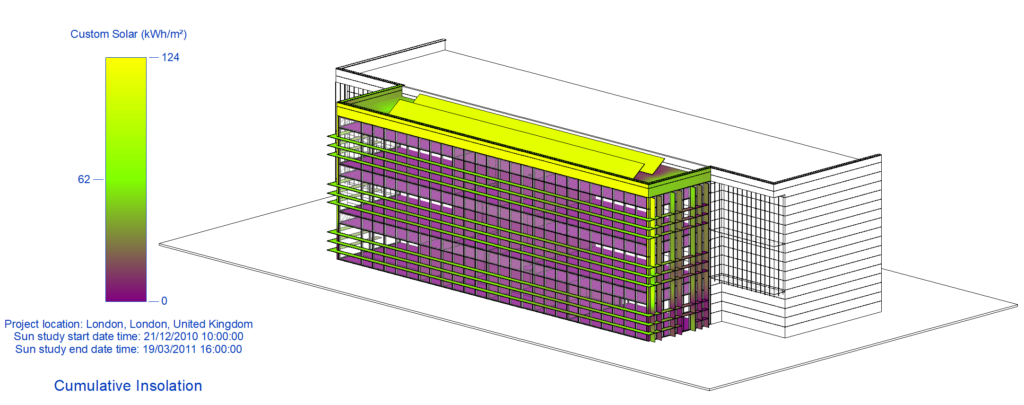 Glazing ratios and solar shading devices designed to suit solar orientation ensure the building façade becomes more resilient to excessive heat gains and losses.
Glazing ratios and solar shading devices designed to suit solar orientation ensure the building façade becomes more resilient to excessive heat gains and losses.
In addition, the optimisation of U-values in external walls, roofs and floors, and effective airtightness details result in a thermally efficient building envelope that reduces Energy Use Intensity (EUI) per square metre and associated carbon emissions.
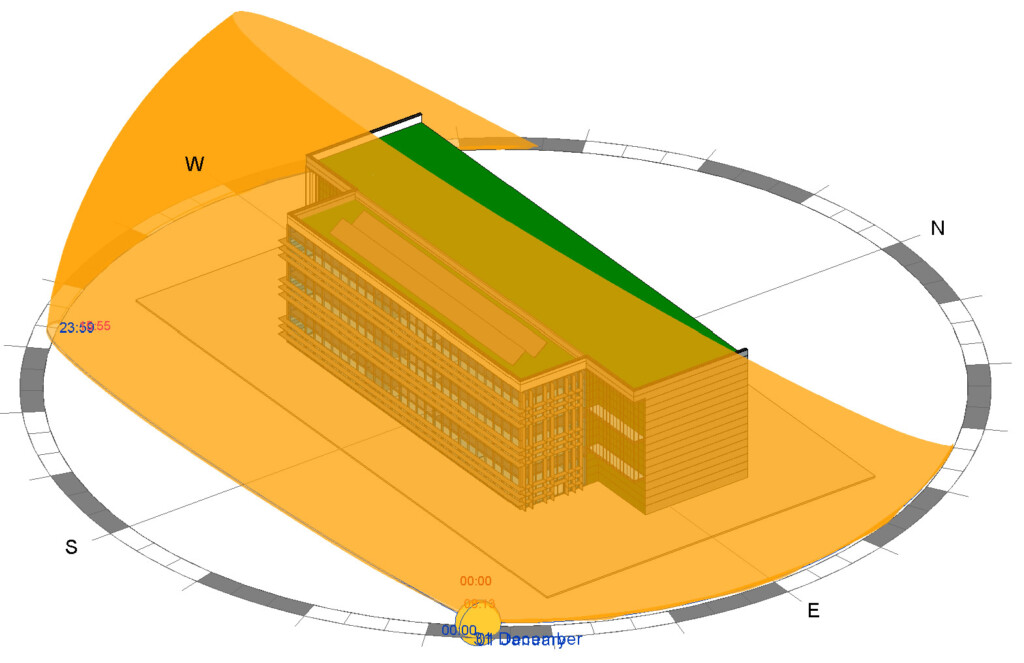
studioNWA continues to invest in its own sustainability capabilities, including software that can provide real-time design feedback on elements that affect thermal performance of the building fabric. Our design toolkit can also assist the team to identify optimal areas for the installation of solar panels, based on incident solar irradiation values on horizontal and vertical planes.
studioNWA’s early stage design approach facilitates coordination with other disciplines and alignment of energy model targets, contributing to reduction of energy consumption and associated carbon emissions.
studioNWA operates as an ISO 14001:2015 Certified practice, for the implementation of day-to-day actions that minimise our environmental impact. Key objectives include:
- Environmental awareness – Continuing education on the climate emergency and our role as built environment professionals.
- Energy efficiency – To reduce operational energy consumption at the Old Dairy and the carbon emissions associated with it.
- Paper consumption – To minimise paper use and prioritise electronic document trails and correspondence.
- Promoting sustainable aspects of the practice – To engage with our audience in relevant topics affecting the industry in a path to Net Zero 2050.
Certificate No: 326702019
Our CGI expertise contributes to the planning approval process by providing realistic representation which in turn reduces potential obstacles or delays.
From urban massing feasibilities, CGI site plans, photomontages, interior and exterior renders and interactive immersion experiences, the visual aspects of collaborative design progression can be assessed by our clients through every stage of the process.
Our in-house CGI team have a wealth of technical design knowledge and a strong architectural background which ensures accurate architectural renders.
Our CGI capabilities, linked to our BIM process, enable improved collaboration within the design team.
Producing our own CGIs helps our clients visualise the project’s appearance, layout, and details with incredible clarity throughout all stages of the process, and not just at the very end.
Our in-house CGIs allow greater customisation and flexibility – from assisted attention to detail to the ability to explore design options. An image is worth 1000 words.
Cost efficiency and Sustainable design. BIM can help us significantly improve the cost-efficiency of a project whilst allowing us to reduce the impact of buildings by enhancing our Fabric First approach. As well as calculating carbon emissions, we use BIM to reduce wastage, incorporate sustainable materials and improve efficiencies.
Better data management. As all parties are working from the same information – known as a “single source of truth”, the potential for mistakes is reduced. This not only enhances our efficiency and collaboration, but it also strengthens our data quality.
Improved quality assurance. We recognise BIM as a tool to aid decision making and reduce risks.
Better strategic planning. BIM gives us a strategic oversight across design, construction, and operations. It shows us where we can make efficiencies.
Stronger collaboration. With integrated workflows, information sharing, and review features BIM deeply strengthens collaboration. 77% of architects agree that BIM improves communication and understanding.
We manage and provide information according to our standards based on ISO 19650.

